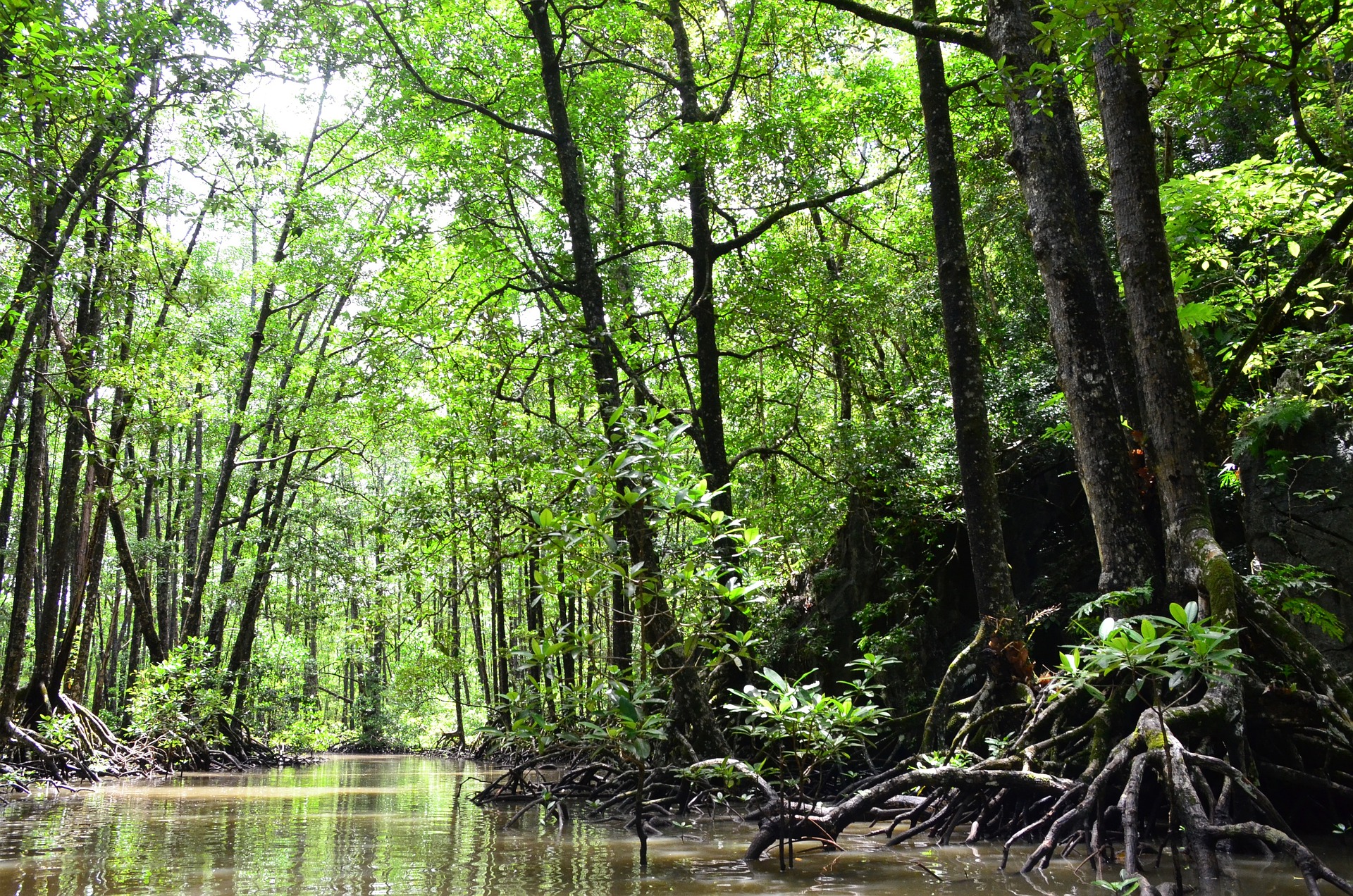This will focus on the opportunities and risks that the Sundarbuns faces.
The worlds largest mangrove forest, which has a population of four million people spanning an area of a million hectares. This is located in the Bangladesh and Indian coastline facing the Bay of Bengal . 60% of the forest lies in Bangladesh and the remaining 40% in India.
Opportunities
- Mangroves provide protection against waves during the monsoon season.
- Wood can be harvested by the locals for using construction for making furniture thus creating local employment which is a local scale benefit.
- A national scale benefit is how companies can harvest the wood which can be used in as an export commodity leading to national economic growth.
- The man grows provide resources for local people like nipa leaves, honey, berries and fishes.
- The flat fertile land makes it ideal for locals to carry out subsidences farming like rice.
- An area had been cleared for a coal powered fire station to be built so that locals have a reliable source of electricity.
- In 2011, one of the rivers were dredged which was then used as an easier route for cargo ships to use.
- Rare animals like the Bengal tigers and the Irawadi dolphins has attracted people which had led to locals to offer tours for the tourists.
- Also this is attracted scientists and researchers into the area, which makes Bangladesh look good on the world stage.
- Another local scale benefit is that the indigenous people treat the mangrove forest as a religious being.
Risks
- The mangrove provide inadequate protection against sea level rises.
- Rivers flooding will contaminate soils and inundate crops creating food shortages and possibly famines as the population grows.
- The country relies on the mangroves, which is at risk of being destroyed.
- Rare animals act hostile against humans making indigenous people at risk.
- Coal powered fire stations will release CO2 into the atmosphere via the combustion of fossil fuels, which will be sequestrated by the forests.
- When scientists and researchers will carry diseases which the indigenous people are not immune from.
- National companies will over fell the trees in the pursuit of profits.
- Restricted access makes it difficult for the government to provide education and healthcare.
Strategies to protect mangroves
- Adaptation- where people change habits to reduce the impact of a hazard
- Strategies: salt resistance rice (the people don’t need to be worried about high tide destroying crops), subsidies for solar panels (makes it more accessible for locals to generate own power mire cheaply and removes need for large power stations), houses on stilts.
- Negative: reducing biodiversity, opportunity cost for the government( a long term investment which creates economic savings in the long run), often expensive (considered an investment`).
- Resilience- the ability to recover from a hazard
- Strategies: Food and water reserves ( this would make it easier for aid to be administered more quickly and less reliant on outside help)
- negative: the restricted access makes it hard to distribute.
- Mitigation- being able to reduce the impact of a hazard
- 3500 kilometres of river embankments (increases river capacity so less likely to flood), reforestation done by volunteers.
- Negative: the poor quality makes it ineffective, doesn’t aim to resolve the underlying problem of the illegal felling of mangroves.
